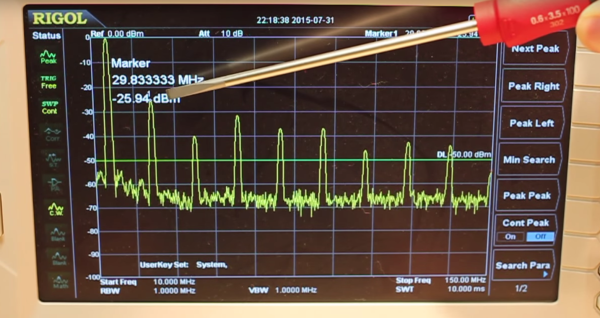In general, you get what you pay for, and when [Craig] picked up a cheap function generator off eBay, he didn’t expect much from it. But as he shows us in his blog post and a series of videos below, while the instrument lived down to his expectations, he was able to fix it up a bit.
Having spent only $100USD for the MHS-5200A, [Craig]’s adventure is a complete teardown and analysis of the function generator. While it sort of lives up to its specs, it’s pretty clear that some design decisions resulted in suboptimal performance. At higher frequencies and higher amplitudes, the sine wave output took on a markedly non-sinusoidal character, approaching more of a triangle waveform. The spectrum analyzer told the tale of multiple harmonics across the spectrum. With a reverse-engineered schematic in hand, he traced the signal generation and conditioning circuits and finally nailed the culprit – an AD812 op-amp used as the final amplifier. An in-depth discussion of slew rate follows in part 2, and part 3 covers replacement of the dodgy chip with a better selection that improves the output signal. We’re also treated to improvements to a low-pass filter that fixed a nasty overshoot and ringing problem with the unit’s square wave function.
If hacking the MHS-5200A seems a bit familiar to you, that’s because we covered another reverse-engineering exploit of it recently. That hack of the serial protocol of the instrument was by [WD5GNR], also known as Hackaday’s own [Al Williams]. Cheers to both [Craig] and [Al] for showing us what you can do with a hundred bucks and a little know-how.
Continue reading “Cheap Function Generator Teardown And Improvement”












